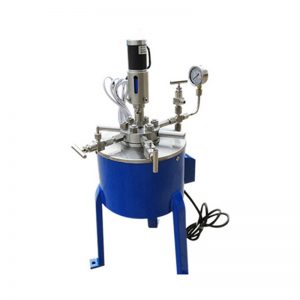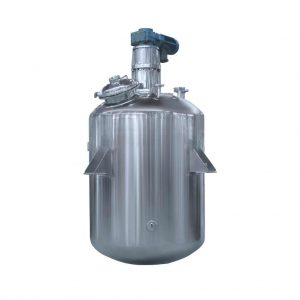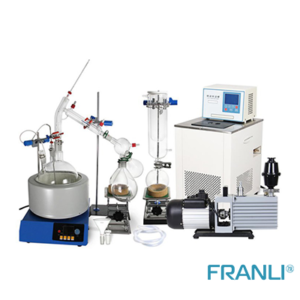Home » FRANLI Stainless Steel Reactor
FRANLI Stainless Steel Reactor
Stainless Steel Reactor
Details of Stainless Steel Reactor
- Using the latest reaction technology
- It has high temperature resistance, corrosion resistance, and high durability.
- Heating methods include steam, electric heater, high temperature heat transfer oil
- Using jacket, half pipe, fan coil, and other structures
Application: Chemicals, pharmaceuticals, dyes, pesticides, petroleum, food additives, etc.
Due to the particularity of the industry, many industries require special customization. FRANLI can carry out design solutions and manufacture according to customer process requirements. And it can also complete the design and manufacture of the entire production line according to the needs of users.
stainless steel reactor design structure
In the process of designing the stainless steel reactor, FRANLI got rid of the complicated design in the past and adopted a very compact and concise solution, which can allow operators to get started easily, and to a certain extent effectively realize its heating and cooling reactions. With further stirring, this series of stainless steel reactors have higher production efficiency and better yields and cost less.
Selection of stainless steel reactor
As the working pressure of the stainless steel reactor increases, the reactor body will also become thicker and heavier, the pressure gauge range and the burst value of the safety valve will increase, and the pressurization method will also change. Generally, steel gas cylinders are used for pressurization. When the bottle is full of gas, about 12MPA can be added. If the temperature is not increased, higher experimental pressure is required, and the pump equipment can only be used.
The working temperature of the stainless steel reactor determines the stirring type. Generally, the magnetic stirring reactor has no cooling function between the stirring motor and the magnet. Magnetic, which means that it cannot be stirred. If it exceeds 300 degrees, it can only use another stirring method, paddle stirring, which can be mechanically stirred with a flexible shaft magnetic coupling or a direct-connected motor magnetic coupling mechanical stirring.
The size of the volume also determines the weight of the kettle body, the size of the heater, the increase in cost, and the equipment of the kettle. For example, for a 10ML paddle stirring kettle, the temperature measurement should be changed to the form of temperature control of the kettle wall, or a 10ML magnetic stirring kettle. The inner tank can not be installed with a filter and so on.
The gas external circulation of the stainless steel reactor produced is to lead the reaction gas from the gas phase space, and the gas is pressurized by the compressor and then introduced from the bottom of the reactor. With the cooperation of the agitator, a larger gas holding capacity and contact area can be obtained to improve the reaction rate of the stainless steel reactor. The advantage of the stainless steel reactor design is that any amount of gas circulation can be obtained.
Safety settings of the stainless steel reactor
1. The agitating device is customized for the stainless steel reactor. The mixing shaft adopts a pressure-resistant environmental sanitation mechanical equipment sealing device to ensure the pressure in the tank and avoid unnecessary environmental pollution and material consumption caused by the leakage of materials in the tank.
2. The supporting form shall be suspended or floor-standing support type according to the actual operation regulations.
In the process of operation, the stainless steel reactor will effectively pass the temperature controller on its electric heating constant temperature control cabinet, which can effectively control the temperature of its heat transfer oil and the reaction temperature of the internal materials of the equipment to a certain extent. The electric heating device is installed in groups, mainly through the electric heating constant temperature control cabinet to realize its group control.
Welcome to send inquiry to us and let’s make a win win business together !
Guidelines For Stainless Steel Reactor
FRANLI has several complete stainless steel reactor production lines. Our stainless steel reactor adopts the latest infinitely variable speed reducer device, the sealing device can be a mechanical seal, and the heating and cooling can adopt the structure of a jacket, half pipe, fan coil, etc., The heating methods include steam, electric heater, and high-temperature heat transfer oil to achieve different safe processing environments such as acid resistance, heat resistance, wear resistance, and corrosion resistance.

Laboratory Reactor: Guide to Stirring System
The laboratory reactor is composed of a pot body, a pot cover, an agitator, a jacket, a support and transmission device, a shaft seal device, etc.

Overview of Laboratory Reactor
Laboratory reactors, also known as lab reactors, are essential tools in scientific research, product development, and process optimization. These reactors provide a controlled environment for conducting chemical reactions, mixing, dispersing, and homogenizing processes.

What is A Stainless Steel Reactor?
Stainless steel reactors are essential equipment in various industries, including chemical, pharmaceutical, biotechnology, and food processing.

Glass Reactor & Chemical Equipment
Glass reactors are essential equipment widely used in the chemical, pharmaceutical, and biotechnology industries. They come in various types, suitable for different applications.

Operating Guide for Laboratory Reactors
Laboratory reactors play a crucial role in chemical research and development. Understanding the proper operating procedures is essential to ensure accurate results and maintain a safe working environment.

Glass Reactors and Selection of Stirring Blades
Glass reactors, also referred to as glass reaction vessels, are vessels made from high-quality borosilicate glass material.

